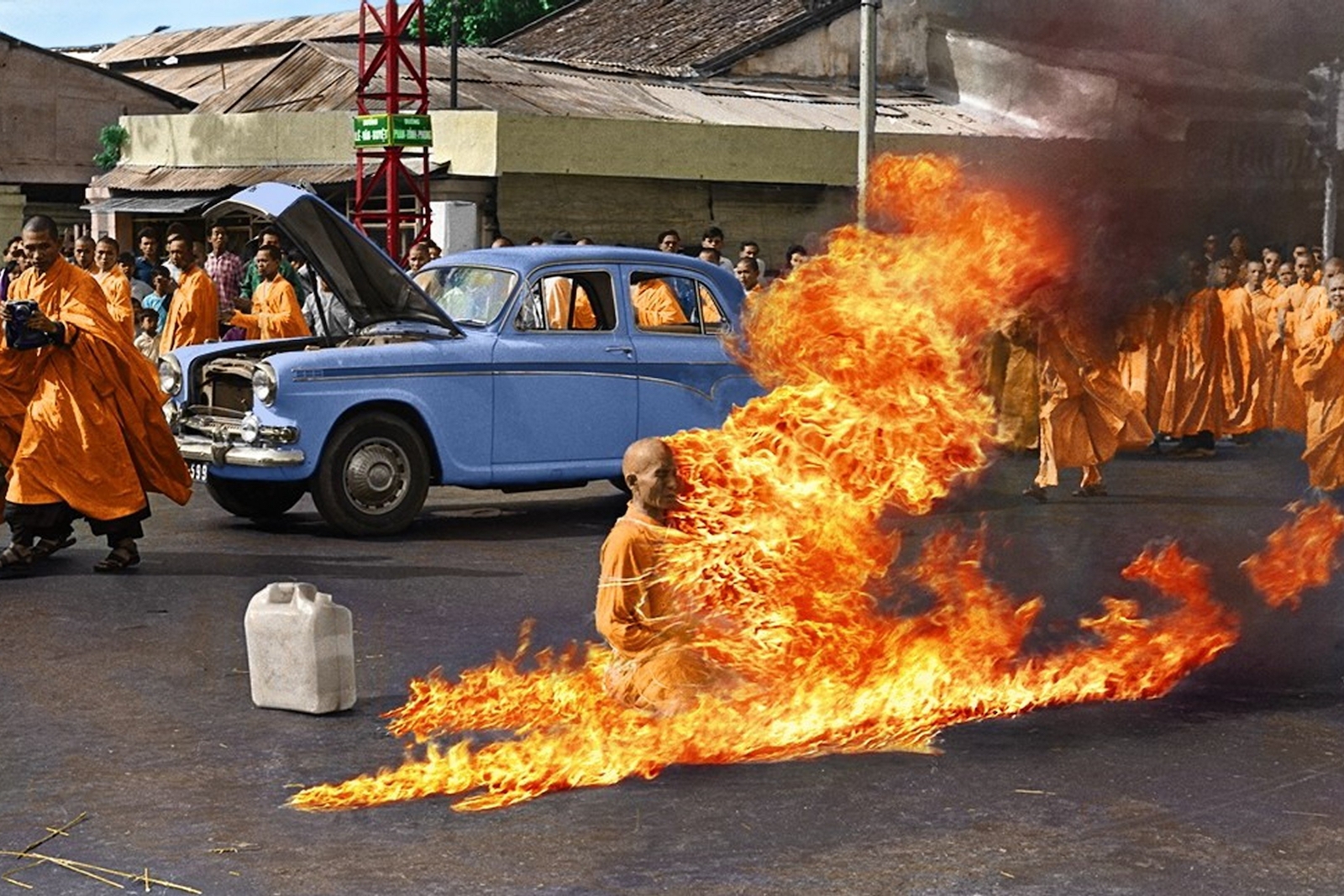
Culture
Buddhist Self-Immolation: Religious Practice or Political Protest?
Self-immolation is a phenomenon that frequently comes in waves. With over 150 Tibetans having burned themselves to death since 2009, the world currently faces one such wave. Self-immolation means self-sacrifice. While often synonymous with auto-cremation, other forms of sacrifice (jumping to death, self-mummification, etc.) fit the definition. There is a long history of Buddhists self-immolating. Self-immolation’s significance depends on context. Hence, comparing instances is an effective way to understand the practice.
The most widely known self-immolation is the auto-cremation of Thich Quang Duc. During the Vietnam War, the United States supported South Vietnamese President Ngo Dinh Diem. Diem’s regime persecuted Buddhists and favored Catholics. This resulted in the Buddhist crisis of 1963, during which Buddhists protested lack of religious freedom. On June 11th, 1963, Vietnamese Buddhist monk Thich Quang Duc burned himself to death at an intersection in Saigon. Duc’s photo spread worldwide, ultimately contributing to the toppling of Diem’s regime.
Subsequently, Duc’s sacrifice has become a symbol of protesting for peace. But James Benn, an expert on self-immolation, contests this idea. In an article comparing Duc’s immolation with Chinese self-immolations, Benn notes that there is “no evidence” Duc intended “that his death could bring peace.” Instead, Benn argues that Duc’s self-immolation represents using one’s body to defend the Buddha’s teaching. A Bodhisattva is someone on the path to Buddhahood and enlightenment. The Buddhist Lotus Sutra states that a way to create conditions necessary to become a Bodhisattva is through great sacrifice, especially in defense of the Dharma. Offering one’s own body also affects change in people’s minds.
Facing threats to Buddhism, Duc gave himself up to change opinions towards his religion, just as a Bodhisattva would. In the conclusion to his book on the topic, Benn explains that Buddhist self-immolators “interacted with…and affected the world around them.” Therefore, while not attempting to bring peace, Duc’s act influenced the society around him. Within a world that often sees religion and government at odds with each other, this gives the religious act political implications.
In fact, recent examples of Tibetan self-immolation have explicitly used the practice as political protest. Self-immolation as protest has no grounding in Tibetan history or culture and only began in Tibet in 2009. Tibetans have self-immolated to protest the Chinese occupation of the region, originating from the 1950 Chinese annexation of Tibet. A noteworthy example of Tibetan self-immolation as protest is the 2012 auto-cremation of Tibetan monk Lama Sobha. In pamphlets and recordings shared across the Internet, Sobha detailed his intentions: he wanted to urge Tibetans to preserve the Tibetan nation in the face of persecution. Therefore, Sobha’s sacrifice appears to be political rather than religious.
However, in her article analyzing self-immolation as a form of protest, Katarina Plank stresses that Tibetan self-immolation is seldom separate from religion. In recordings, Sobha calls his self-immolation a way to “transform darkness into light for…others.” By using his body to affect the universe, Sobha places his sacrifice in a tantric, Buddhist framework. Sobha also references self-immolations in the Jataka Tales and the Lotus Sutra, placing his sacrifice in a heritage of Buddhist self-immolation. The act undoubtedly has political intent, as seen by the message’s content and the choice to share it digitally, but seeing Tibetan self-immolation as merely political is incomplete and may even be a form of neo-orientalism.
Examining Duc’s self-immolation illustrates a religious practice that has political ramifications. Sobha’s example represents a political message that is inseparable from the religious way through which it is delivered. Self-immolation is not exclusively Buddhist; it has been used to deliver many differing political messages. But these two examples show that Buddhist self-immolation is unique in that the history of Buddhist self-immolation and self-immolation’s interplay between belief and practice work together to create an act that is both political and religious. To say otherwise may even project a fictitious rationalism onto Buddhism reminiscent of orientalism.

